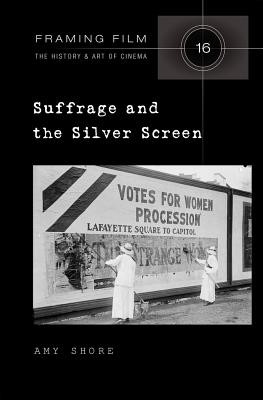
- We will send in 10–14 business days.
- Publisher: Peter Lang Inc., International Academic Publishers
- ISBN-10: 1433117819
- ISBN-13: 9781433117817
- Format: 14.7 x 22.4 x 2.3 cm, hardcover
- Language: English
- SAVE -10% with code: EXTRA
Suffrage and the Silver Screen (e-book) (used book) | bookbook.eu
Reviews
Description
In the 1910s, the American woman suffrage movement became a modern mass movement by using visual culture to transform consciousness and gain adherents. As part of this transformation, suffrage organizations produced several films and related cinematic projects, including four full-length, nationally distributed feature productions. This activist use was one of the first instances in the United States that a social movement recognized and harnessed the power of cinema to transform consciousness and, in turn, the social order. Suffrage and the Silver Screen discusses how the suffrage movement accomplished this formidable goal through analysis of the local and national uses of cinema by the movement. Amy Shore argues that these works must be considered as part of a political filmmaking tradition among feminists. The book contextualizes the films within the politics and practices of the suffrage organizations that produced them in order to understand and assess the strategic role of these films. By examining these works, the history of both suffrage and cinema is necessarily reconsidered and expanded. Suffrage and the Silver Screen is an essential resource for those studying early cinema, women and cinema, the woman suffrage movement, and the use of visual media in social movements.
EXTRA 10 % discount with code: EXTRA
The promotion ends in 16d.10:40:03
The discount code is valid when purchasing from 10 €. Discounts do not stack.
- Publisher: Peter Lang Inc., International Academic Publishers
- ISBN-10: 1433117819
- ISBN-13: 9781433117817
- Format: 14.7 x 22.4 x 2.3 cm, hardcover
- Language: English English
In the 1910s, the American woman suffrage movement became a modern mass movement by using visual culture to transform consciousness and gain adherents. As part of this transformation, suffrage organizations produced several films and related cinematic projects, including four full-length, nationally distributed feature productions. This activist use was one of the first instances in the United States that a social movement recognized and harnessed the power of cinema to transform consciousness and, in turn, the social order. Suffrage and the Silver Screen discusses how the suffrage movement accomplished this formidable goal through analysis of the local and national uses of cinema by the movement. Amy Shore argues that these works must be considered as part of a political filmmaking tradition among feminists. The book contextualizes the films within the politics and practices of the suffrage organizations that produced them in order to understand and assess the strategic role of these films. By examining these works, the history of both suffrage and cinema is necessarily reconsidered and expanded. Suffrage and the Silver Screen is an essential resource for those studying early cinema, women and cinema, the woman suffrage movement, and the use of visual media in social movements.


Reviews